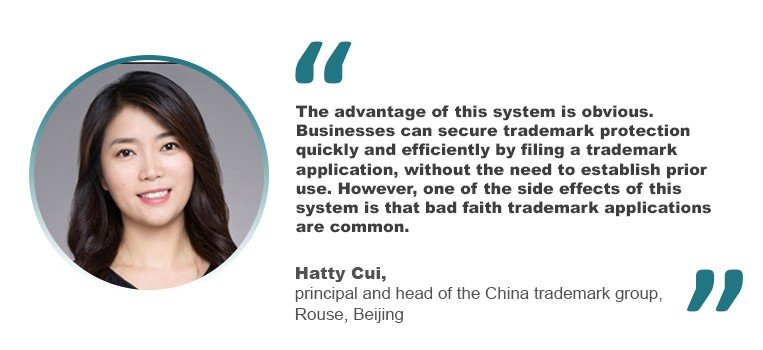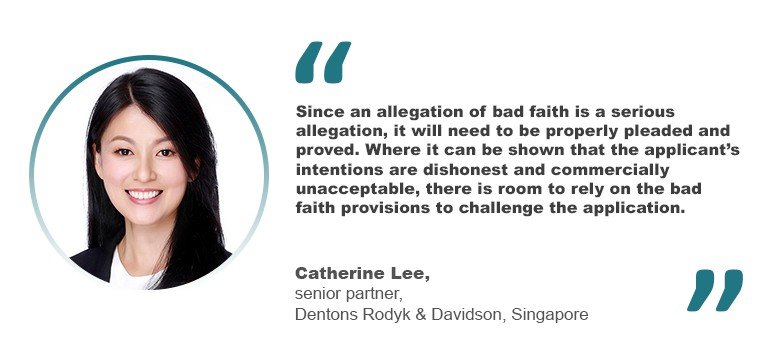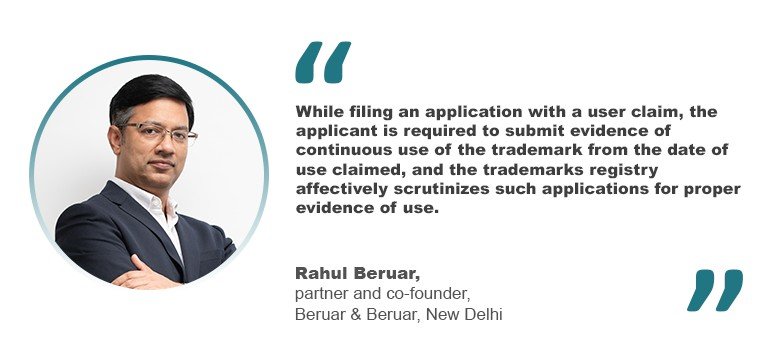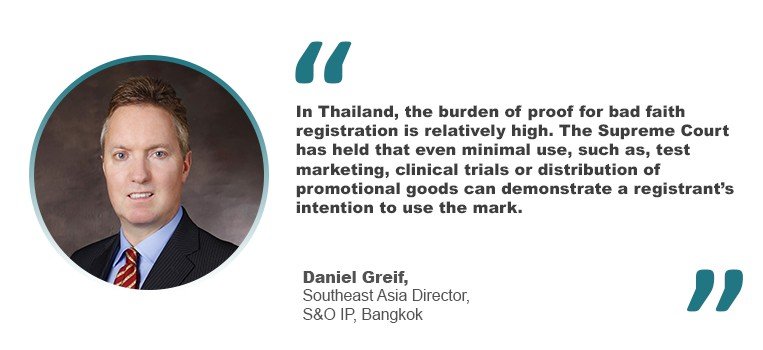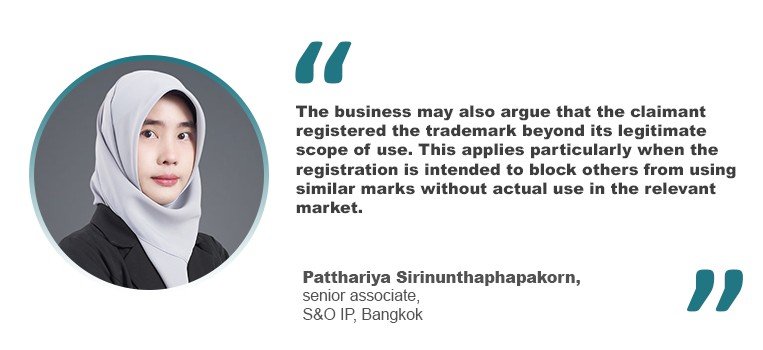“A key defense is demonstrating the business’s actual and continuous use of the trademark with its goods or services,” said Patthariya Sirinunthaphapakorn, a senior associate at S&O IP in Bangkok. “The business may also argue that the claimant registered the trademark beyond its legitimate scope of use or without a bona fide intention to use it. This argument applies particularly when the registration is intended to block others from using similar marks without actual use in the relevant market.”
For instance, if a company primarily operates in Class 9 (electronic devices) but registers its trademark in Class 3 (cosmetic products) solely to prevent third parties from registering similar marks in that class, this could form a valid defense.
Another viable defense involves proving the business has used its trademark in good faith, with no intent to mislead consumers or infringe the claimant’s rights. “If the business can demonstrate long-standing prior use of the trademark either domestically or internationally before the claimant’s registration in Thailand, this further strengthens its position,” she said.
In China, in cases involving litigation filed by trademark registrants who lack intent to use their marks and if the registrations are found to be obtained via bad faith, there are high chances that the registrant’s trademark infringement claims will not be supported by the court under current practice.
Article 64 of the China Trademark Law stipulates that where a trademark registrant seeks compensation based on registered trademark right, the alleged infringer may plead that the registrant has not used the registered trademark.
“In such cases, the court may require the registrant to provide evidence of actual use of the registered trademark during the preceding three-year period,” said Cui. “If the registrant cannot prove that the trademark has been actually used within the preceding three years, the alleged infringer shall not bear compensation liability.”
The alleged infringer may also petition to cancel the registered mark based on the grounds of non-use for three consecutive years.
“In practice, legitimate brand owners are generally cautious when enforcing against others based on defensive trademark registrations. Since the alleged infringers are likely to file non-use cancellation against the defensive registrations and it is difficult to defend such an action if no use for such defensive registrations,” said Cui.
Cui noted that while the fifth amendment of the China Trademark Law is still ongoing, the draft launched for public comments disclosed that although the filing basis will remain first-to-file, the amendment may introduce more use requirements when filing and maintaining trademark registrations, such as post-registration maintenance.
“The draft revision aims to address several key issues, including stricter regulation of malicious registrations, enhanced protection of well-known trademarks and increased scrutiny of trademark agents,” she said. “Although these amendments are not focusing on preventing the misuse of the trademark system for anti-competitive purposes, they will be helpful to reduce the anti-competitive activities.”
In India, one of the most effective remedies available for businesses facing trademark infringement claims is to challenge the defensive registration of the claimant company under the ground for lack of bona fide intent of use. These counter petitions challenging the defensive registrations, in case of such disputes, are filed before the courts and usually proceed parallelly with the infringement suits, thus ensuring a fair opportunity to the defendants to present their case against any adverse interim relief as well.
“Moreover, vigilant entities can also voluntarily file rectification proceedings against such defensive registrations of companies, without having to wait for the company to raise any infringement claim,” said Beruar.




